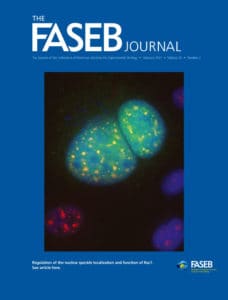Monomeric/dimeric forms of Fgf15/FGF19 show differential activity in hepatocyte proliferation and metabolic function
Courtney M. Williams et al, The FASEB Journal, 2021
Williams and colleagues at Regeneron Pharmaceuticals perform structure/function relationship studies on Fgf15 and FGF19 using site-directed mutagenesis and downstream functional assays in order to understand their distinct functions in a common pathway. Both molecules are therapeutic targets due to involvement in hepatocellular carcinoma and bile acid production. This publication identifies a single cysteine residue is identified that controls dimerization and hepatocyte proliferation. Understanding these molecular pathways may inform future studies on hepatocellular carcinoma while limiting toxicity and induction of hepatocyte proliferation. Immunohistochemistry images were quantified in HALO Link using the Cytonuclear IHC module.



